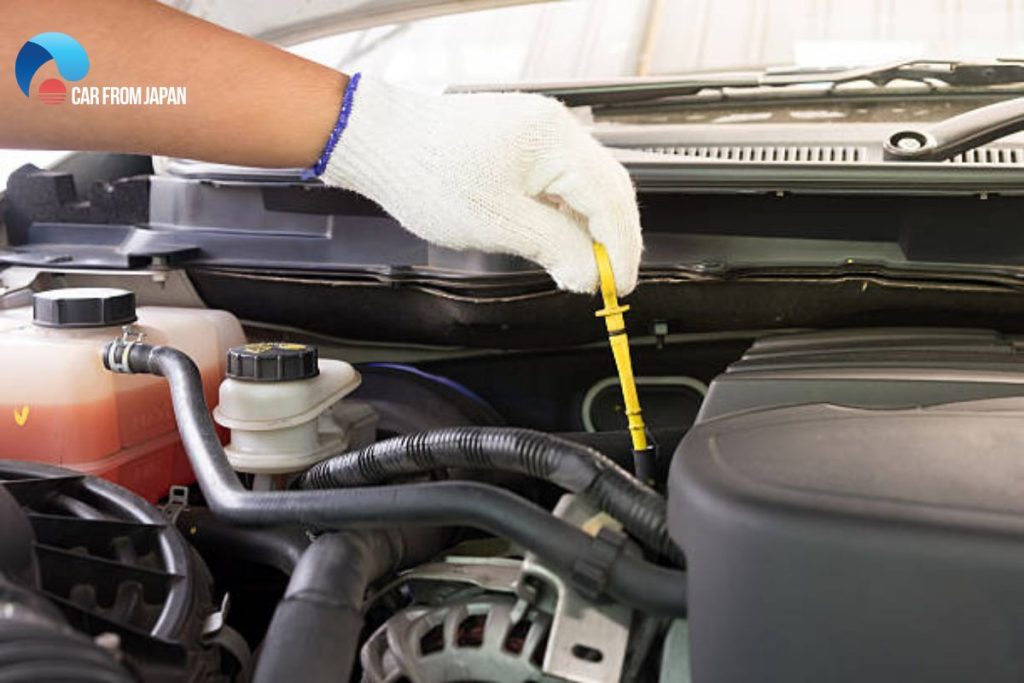Do you check transmission fluid while the car is running is a good question. If you learned to check your engine oil with the car turned off, you might assume the same rule applies to your transmission. But doing that can lead to a major, costly error. The truth is, checking automatic transmission fluid requires a completely different procedure, so what is the right process? Let’s read our article to find the right answer:
Contents
Do You Check Transmission Fluid While The Car Is Running?
Automatic transmission fluid expands a lot when it gets hot, and it needs to be circulating through the system for an accurate reading. That’s why the answer to this question is almost always ‘yes’—you must check the fluid while the car is running and fully warmed up. Here’s what you need to know to get a true reading and protect your transmission.
Should we inspect the fluid level when the engine is on?
Unlike checking engine oil, the car expert always recommends that we should measure the oil when the engine is cold to help the oil settle in the oil pan and get an accurate measurement. But, for the transmission fluid, generally, we should check the level when your car is running at operating temperature.
About 99% of the time, you will need to warm up the transmission fluid and after that, we will check the level when your engine is running at idle, in a neutral position, or park mode on a flat surface which will depend on the car model and transmission mode.
However, there is an exception for Honda’s cars, specifically the Accord. The time to measure the level of the transmission fluid will be a little different. According to the manual for Honda Accord, the automaker recommends that drivers should check the transmission fluid when the engine is off but it doesn’t mean the fluid is cold like checking the engine oil, you still need to warm up the transmission fluid, then turn off the engine before checking the level.

Why check transmission fluid when the engine is running?
Reading here, we are sure that some drivers will find inspecting the transmission fluid a little bit complex so why check transmission fluid when engine is running? We should check the transmission fluid with the engine running and warm it up at the normal operating temperature because at that time the fluid is expanding and thinner than it’s cold.
If the transmission fluid is too cold, the liquid will become thickened and it will cause the incorrect level reading. The consequence is that you will overfill the transmission fluid because the engine runs, and the fluid will heat and expand.
In this case, the liquid is cold due to turning the engine off, when adding the transmission fluid, you will subtract a certain amount of fluid, after that you will start your engine and check if the fluid is not filled.
The automatic transmission will need to check the fluid level when your car is operating because engine power is transmitted to the gearbox through a torque converter-fluid coupling.
This part is filled with fluid supplied by the transmission pump. It will be in full condition while the engine is running, but when your car is off, the fluid flows back into the transmission because at this time the oil pump will not spin to keep it full.
How To Check The Transmission Fluid In The Right Way?
Step 1: Stop your car on a flat surface and change the gear to P for automatic transmission or 0 for manual cars. And pull the handbrake.
Step 2: Start the engine for 10 minutes to let the transmission fluid reach the operating temperature.
Step 3: Open the hood and find the automatic transmission oil hose. In some new vehicles, the automatic oil line will be labeled. Normally, oil fluids in manual transmission cars often have separate symbols. If you can’t find those identification marks on your car, you should refer to the manual.
Then, take out the dipstick to start the oil dip. The dipstick is usually located behind the engine, at the top of the oil tank for rear-wheel drive vehicles and in front of the engine, to the right of the oil tank for front-wheel drive vehicles.

Step 4: After locating the oil dipstick. Take out the test strip and wipe it clean. Then dip it all into the oil tank, then watch the oil stain on the dipstick. On the oil dipstick, there are usually 2 marks C and HOT. The car owner must always ensure that the oil level is within these 2 lines.
- If the fluid is below the C line, you need to add more oil
- The fluid on the HOT line sucks out some oil
Step 5: Check the color of the transmission fluid: Next, you need to check the color to know if the oil needs to be changed or not. If your car’s oil is red or pink or light brown, it can still be used. If it is dark brown, milky brown, or has an unpleasant/pungent smell, the oil needs to be changed.
When Should You Check The Transmission Fluid?
Many car manufacturers that use automatic transmissions give recommendations for the need to change the lubricating oil when the vehicle hits the 160,000km mark. Even for some luxury car manufacturers like Ford, this number is up to about 240,000km. However, that is in theory, which means that all factors are good. However, to ensure safety, experts recommend changing the automatic transmission oil when the vehicle is about 80,000 km.
As for the manual transmission or CVT, it should be changed after 40,000 km. But that is still not the most exact number. Because it’s not that when the oil only reaches the right mileage, you will change it. But you need to regularly check to see if the oil is lacking or not. This is also very important for the operation of the vehicle. And the most accurate answer will be determined after you conduct a check of the condition of the fluid.
Conclusion
So, here’s the one thing to burn into your memory: Engine oil, engine off. Transmission fluid, engine on. Remembering that one simple difference is the key to preventing a very costly mistake. An incorrect fluid level is one of the fastest ways to damage a transmission, so taking the time to do it the right way is always worth it.



